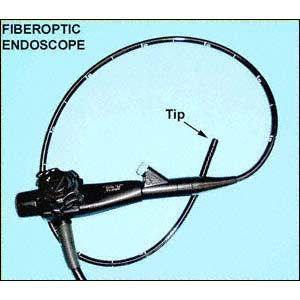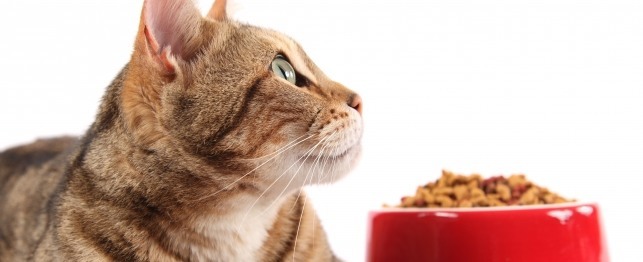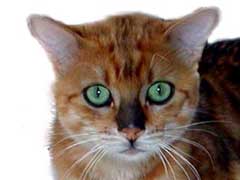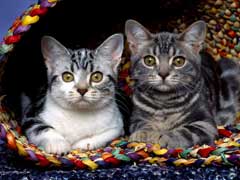
Cats
Dehydration occurs when the total body water is less than normal. Usually it involves loss of both water and electrolytes, which are minerals such as sodium, chloride and potassium. During illness, dehydration may be caused by an inadequate fluid intake. Fever increases the loss of water.
When there is not enough body water, fluid shifts out of the body cells to compensate, leaving the cells deficient in necessary water. This leads to dehydration. The severity of the dehydration is based on the magnitude of these body water shifts.
Dehydration is caused by either a lack of food or water intake or an increase in water loss through illness or injury.
Signs of dehydration include:
Physical examination findings can help determine if dehydration is present. A common but inaccurate way to diagnose dehydration is based on skin elasticity. When the skin along the back is gently lifted, it should immediately return to the normal position. In a dehydrated animal, the skin does not return to normal quickly. The speed of return to normal position can help determine the severity of the dehydration.
Blood tests such as a complete blood count and biochemistry profile are important to try to find the underlying cause of the dehydration but may not reveal if dehydration is present.
The most important tests are a packed cell volume and total blood protein test. These tests are done on a blood sample and can help reveal if dehydration is present.
If the packed cell volume and total protein are elevated, dehydration is present.
Determining the concentration of the urine can also help determine if the pet is dehydrated and if the kidneys are affected.
The treatment for dehydration is to supplement the body with fluids. It is often not possible for an ill pet to ingest sufficient water to correct dehydration. Fluids are typically administered as an injection. The most efficient method of rehydration is through intravenous fluids. This requires hospitalization as well as an intravenous catheter.
Fluid replacement is done slowly to allow the body to compensate and slowly replenish tissues starved of fluid.
There is no home care for dehydration. If you suspect that your pet is dehydrated, prompt veterinary care is recommended.
Some animals can be treated with subcutaneous fluids at home, after an initial diagnosis and treatment. Ask your veterinarian if this is an option and have him/her show you how to administer injectable fluids at home.
Make sure your cat eats and drinks normally. The best way to prevent dehydration is to have your pet examined and treated early if an illness occurs. For sick pets, preventing dehydration may be difficult but if promptly treated, can result in recovery.
 Chronic Diarrhea in Cats
Chronic Diarrhea in Cats
Chronic Diarrhea in Cats
Chronic Diarrhea in Cats
 Decrease in Appetite in Cats
Decreased in Appetite in Cats
Decrease in Appetite in Cats
Decreased in Appetite in Cats
 Feline Diabetes Diet – What Foods To Consider?
While
Feline Diabetes Diet – What Foods To Consider?
While
 Aspergillosis in Cats - Causes, Symptoms and Treatment
Aspergillosis in Cats - Causes, Symptoms and Treatment Asper
Aspergillosis in Cats - Causes, Symptoms and Treatment
Aspergillosis in Cats - Causes, Symptoms and Treatment Asper
 Pregnant Cats With Fleas and Worms – How To Treat Safely?
When y
Pregnant Cats With Fleas and Worms – How To Treat Safely?
When y
Copyright © 2005-2016 Pet Information All Rights Reserved
Contact us: www162date@outlook.com